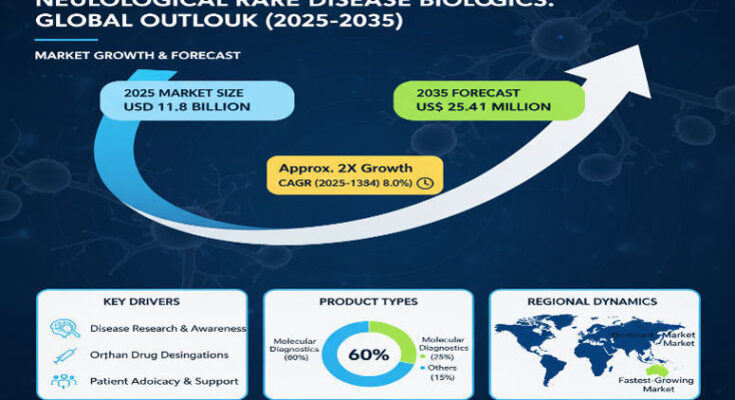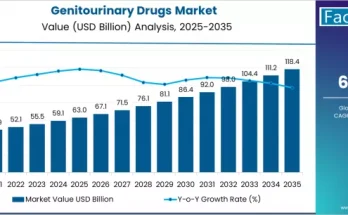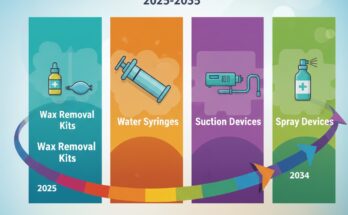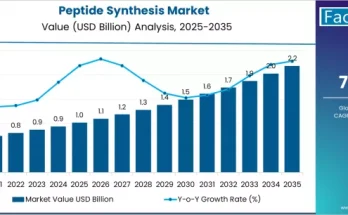The Laboratory Developed Test market, also known as LDTs, is on a strong growth trajectory. In 2024, the market is estimated at USD 8.70 billion, and it is forecast to more than double to around USD 16.40 billion by 2034, growing at a CAGR of approximately 6.5%. This expansion reflects rising demand for personalized medicine, greater incidence of chronic and genetic conditions, and increasing reliance on diagnostics designed in-house or within specialized labs rather than fully commercialized tests.
Key Market Drivers & Opportunities
One of the primary drivers is the trend toward individualized treatment regimens—clinicians increasingly require tests that can provide fine-tuned insights into a patient’s molecular, genetic, or biochemical profile. This demand is supplemented by growing burden of chronic diseases like cancer, cardiovascular ailments, and metabolic disorders. Another important factor is the rising demand for cost-efficient diagnostics; LDTs often offer more flexibility and faster turnaround times compared to some regulatory-approved tests. There is also a robust pipeline of innovation in molecular diagnostics, immunology, clinical biochemistry, and oncology, spurred by better biomarker discovery, automation, and improved lab-based workflows. Finally, emerging markets are investing more in diagnostic infrastructure, amplifying growth opportunities outside traditional strongholds.
Segment & Application Insights
Among the testing technologies in the LDT market, clinical biochemistry occupies the largest share (close to one third of market value), followed by molecular diagnostics. Applications in oncology represent the largest usage segment, given the high demand for tumor profiling, companion diagnostics, and monitoring. Genetic testing is also growing rapidly. In terms of end-users, hospital and specialty diagnostic laboratories remain key buyers, supported increasingly by research institutions and direct-to-consumer labs. Use-cases across infectious diseases, rare disease diagnosis, and disease monitoring are expanding.
Regional Outlook: North America & East Asia
North America—particularly the United States—leads in both market size and adoption rate. In 2024, roughly 38% of the global LDT market revenue is derived from this region. The U.S. contribution is especially high, driven by advanced diagnostics infrastructure, regulatory pathways that allow laboratories to develop their own tests, and strong demand for precision medicine. Growth in North America is projected to continue at a solid CAGR (~5-6%) through 2034.
East Asia stands out as a region with faster growth rate forecasts, with double-digit CAGRs in some countries. China, in particular, is projected to contribute a large share of East Asia’s LDT revenue owing to increasing healthcare investments, rising disease burdens, and growing capacity in molecular diagnostics. Other East Asian countries are also investing in diagnostic innovation, regulatory alignment, and broader access to LDTs, pushing the region’s share and impact upward.
Challenges & Regulatory Headwinds
Despite its strong growth prospects, the LDT market faces notable barriers. Regulatory oversight is a major issue: in many jurisdictions, the distinction between LDTs and approved diagnostic tests is under scrutiny, leading to evolving requirements for validation, documentation, and safety. Ensuring accuracy, reproducibility, and avoiding false positives/negatives is particularly important as tests become more complex and are used in critical clinical decisions. Reimbursement is another concern: payors may be hesitant to reimburse lab-developed tests that lack robust evidence or high volume studies. Also, smaller labs may struggle with the cost, technical capability, and compliance burden associated with developing, validating, and scaling LDTs. Finally, supply chain issues — reagents, specialized instrumentation, and skilled personnel — can hinder growth, especially in less developed markets.
Recent Developments & Competitive Landscape
Recent years have seen a surge in partnerships between diagnostic labs, biotech firms, and research centers to accelerate test development and validation. Technological advances—particularly in next-generation sequencing, multiplex assays, digital assay platforms, and AI/ML-based analytic software—are improving the speed, sensitivity, and specificity of LDTs. Key players in the market include both independent clinical labs and larger diagnostics companies that offer both commercial IVD tests and LDT services. Competition increasingly focuses on assay performance, turnaround time, ease of use, regulatory compliance, and ability to serve specialty disease areas. New entrants are also leveraging direct-to-consumer channels, at-home sample collection kits, and remote diagnostics, expanding reach and use-cases.
Browse Full Report: https://www.factmr.com/report/laboratory-developed-test-market
Market Outlook & Strategic Takeaways
Looking forward, the Laboratory Developed Test market is poised for sustained growth through 2034. Key success factors for companies will include strong validation and quality control, regulatory preparedness, strategic partnerships for scale, and investments in technologies that reduce costs and improve test performance. In large markets like the U.S. and China, regulatory clarity and lab capacity will play a defining role. Labs and diagnostics providers that can offer flexible, high-value, clinically actionable tests will capture the growing demand. As personalized and precision medicine become more mainstream, the role of LDTs in guiding treatment decisions, monitoring disease, and enabling early detection is likely to increase substantially.



